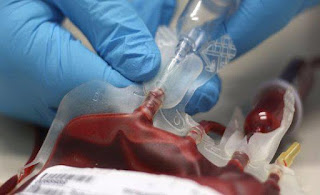Unveiling the Mystery: Anesthesia Gases and Their Vital Role in Modern Medicine
Introduction:
In the realm of modern medicine, surgical procedures and medical interventions have become safer and more effective, thanks in large part to the advancements in anesthesia techniques. Among the key elements of successful anesthesia administration are anesthesia gases. These remarkable substances have been instrumental in ensuring patient comfort and safety during surgery. In this blog, we will delve into the significance of anesthesia gases and their crucial role in the world of healthcare.
The Essence of Anesthesia Gases:
Anesthesia gases are substances administered to patients before and during surgical procedures to induce loss of sensation or consciousness. They allow medical professionals to perform intricate surgeries without the patient experiencing pain or distress. These gases have revolutionized the field of surgery, making complex operations feasible and improving patient outcomes.
Ensuring Patient Comfort and Safety:
The primary objective of using anesthesia gases is to ensure the patient's comfort and safety throughout the surgical process. By blocking pain signals and inducing a state of unconsciousness, anesthesia gases enable surgeons to focus on their work while the patient remains in a controlled and pain-free state. Moreover, these gases also prevent involuntary movements during surgery, minimizing the risk of complications.
Types of Anesthesia Gases:
Several types of anesthesia gases are employed in medical settings, each with its unique properties and applications. Nitrous oxide, often known as the "laughing gas," is frequently used for mild sedation during dental procedures. Sevoflurane and desflurane are inhalation anesthetics commonly utilized for general anesthesia induction and maintenance, while isoflurane strikes a balance between depth and safety during surgical procedures.
Advancements in Anesthesia Delivery:
Over the years, advancements in medical technology have greatly improved the administration of anesthesia gases. Precise vaporizers, sophisticated monitoring systems, and meticulous dosage calculations have led to safer and more accurate anesthesia delivery. These innovations have significantly reduced the risks associated with anesthesia and enhanced patient recovery.
The Collaborative Effort of Anesthesia Teams:
Behind every successful anesthesia administration is a well-coordinated team of medical professionals. Anesthesia providers, anesthesiologists, nurses, and other healthcare staff work together seamlessly to ensure the patient's well-being throughout the surgical process. Their expertise, vigilance, and commitment to patient care are crucial in maximizing the benefits of anesthesia gases.
Conclusion:
Anesthesia gases continue to play a vital role in modern medicine, revolutionizing surgical practices and improving patient outcomes. With advancements in technology and the dedication of skilled healthcare professionals, the administration of anesthesia gases has become safer and more efficient than ever before. As we unveil the mysteries of anesthesia gases, we appreciate the immense impact they have had on the field of medicine, shaping the way surgeries are performed and enhancing the quality of patient care.




Comments
Post a Comment